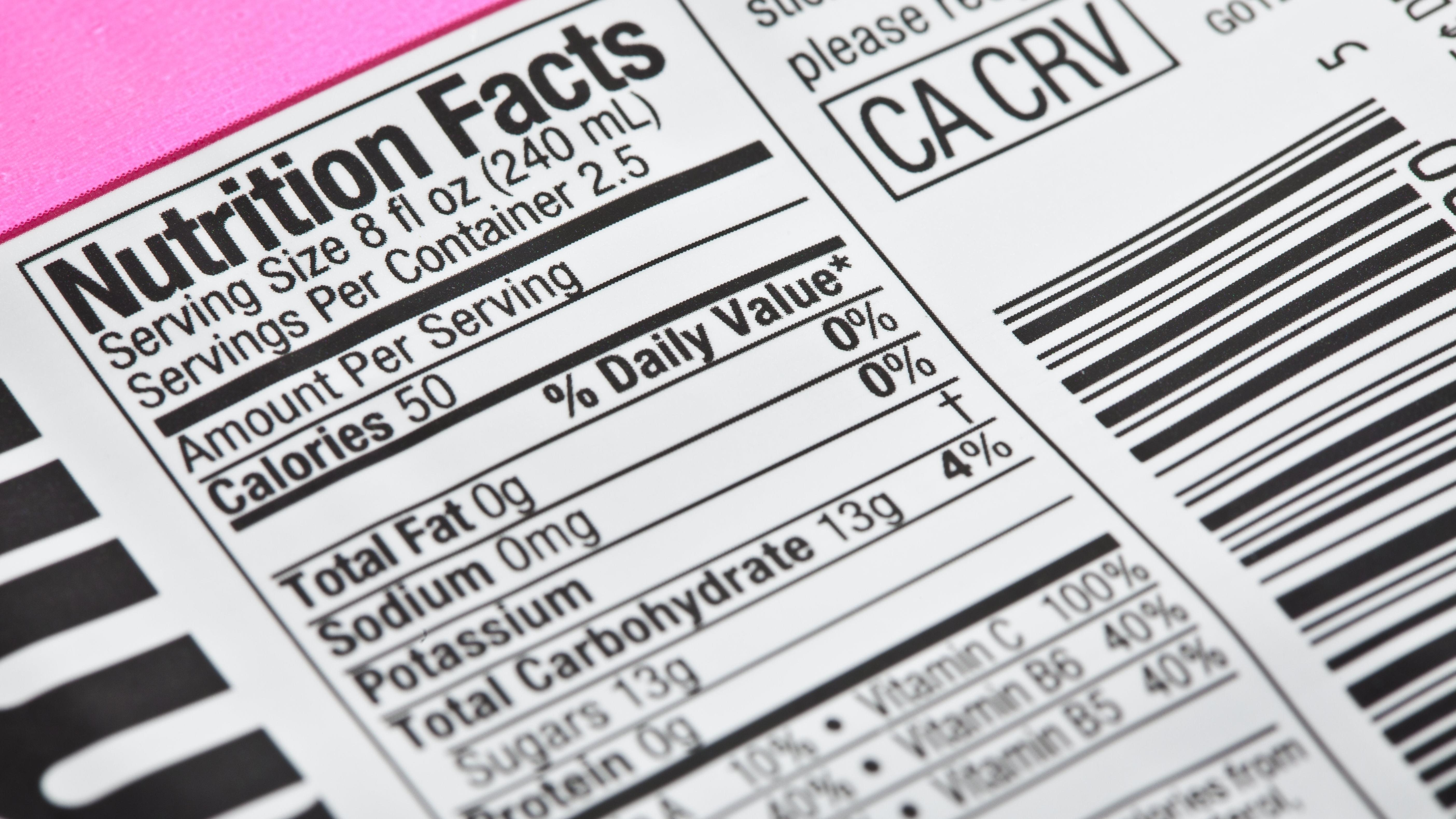Nutrition Labels Might Change Again Soon
President Biden is pushing for a change in the way we mark "healthy" food.
Over the past decade or so there's been a bigger push from government officials for Americans to make their diets as nutritious as possible. First Lady Michelle Obama, for example, spent her time in the White House focused on getting children to eat their vegetables, sometimes teaming up with the most unlikely people to do so. President Biden is taking a more straightforward approach to change the way Americans of all ages view nutrition—literally. The latest tactic involves changing the look and placement of nutrition labels on our grocery items.
A brief history of the nutrition label
Nutrition facts labeling is actually a relatively new concept in itself—it wasn't until 1990 that the Nutrition Labeling and Education Act (NLEA) was signed into law, and according to Food Insight, the first nutrition label in response to that law didn't debut until 1994. Before then, packaged food only required a nutrition label if it was making a specific claim, like "low-fat" or "sugar-free."
The original NLEA outlined specific nutrients that should be accounted for on the label and determined what an appropriate serving size was for different items; it also aimed to make the labels readable to an everyday person. Before this law, nutrition labels were often argued against because the information being shared was too jargony and scientific for the common grocery shopper to understand. With the new label came an increase in nutrition education.
In 2016, the nutritional label was revised to make things even easier to understand (those changes were put into place in 2020). Serving sizes were updated to reflect the population's actual eating habits, so in turn it may have appeared as though the calorie count on your favorite treats went up—it's not that the actual contents changed, just the amount considered. And the calorie number was changed to be bigger and bolder, serving as the main focal point of the label. The new label also got rid of the "calories from fat" section, swapped in an "added sugars" section, and included both vitamin D and potassium in the vitamins section. The FDA is now working to make a label that's even easier to read.
What to expect from the new nutrition label
The new label was announced just before the White House's first-ever Conference on Hunger, Nutrition, and Health, NBC News reports. The proposed update to the NLEA includes an update to the nutrition criteria that allows brands to include the word "healthy" on food labels. More noticeably, this proposal would also put nutrition on the front of packaging instead of the back and include "star ratings or traffic light schemes" to easily and equitably convey nutrition information.
This move is a step "to shift our healthcare system away from just treating disease to preventing it," a senior administration official told NBC News. The struggle here is that this system still puts the onus of health on the consumer instead of the companies that create these unhealthy products in the first place. Yes, the label does create some incentive for brands to create more nutrition-forward items—no one wants to be the company with a big red stoplight on the front of its package—but if sales seem to be unaffected, why would they bother?
The very existence of the Conference on Hunger, Nutrition, and Health shows that this administration is trying to shine a spotlight on the systems preventing equitable nutrition in our country. It seems the new nutrition label is just one of many proposals up for debate in the coming months, and hopefully the rest can more directly benefit the people who need access to nutritious meals the most.
